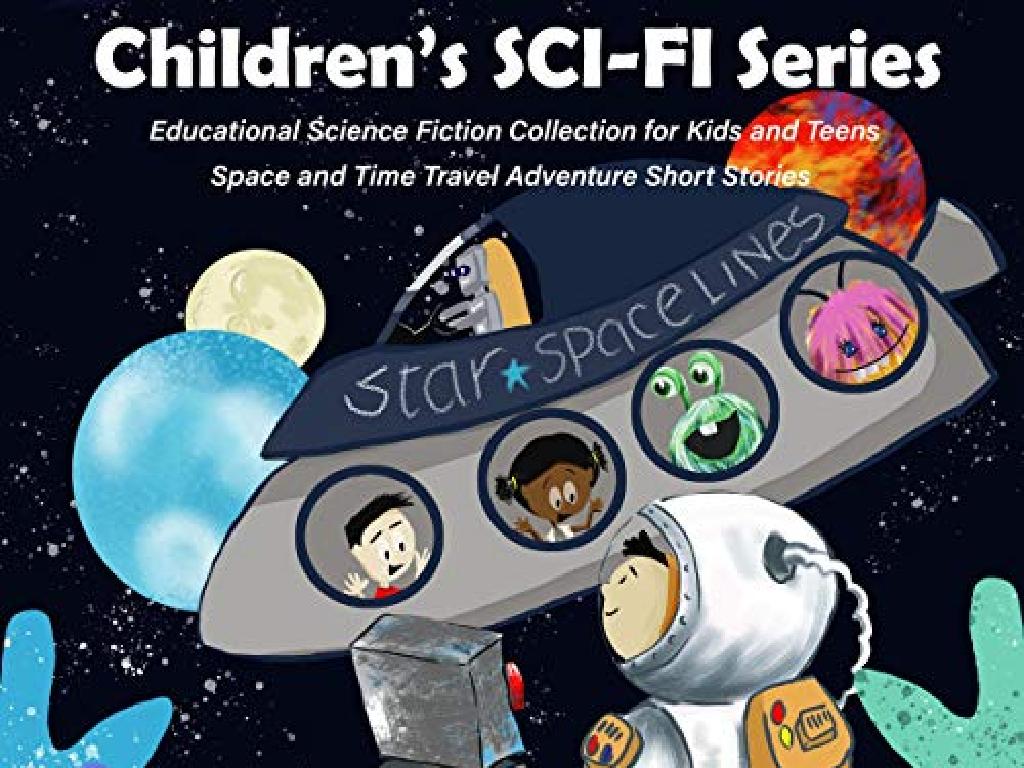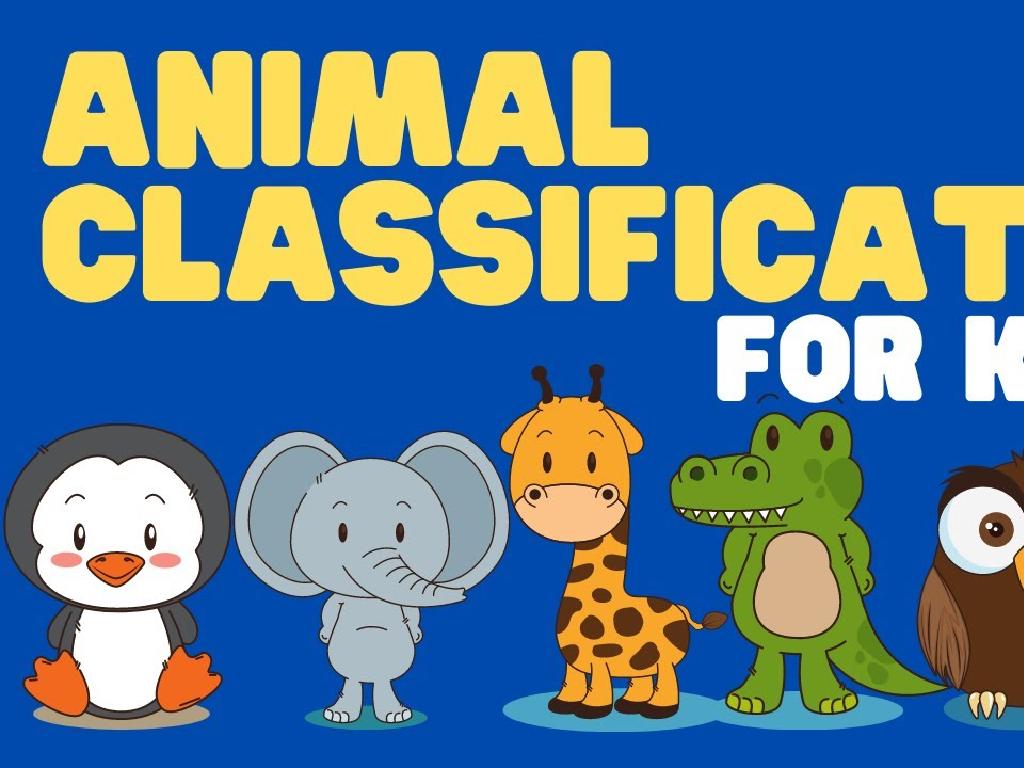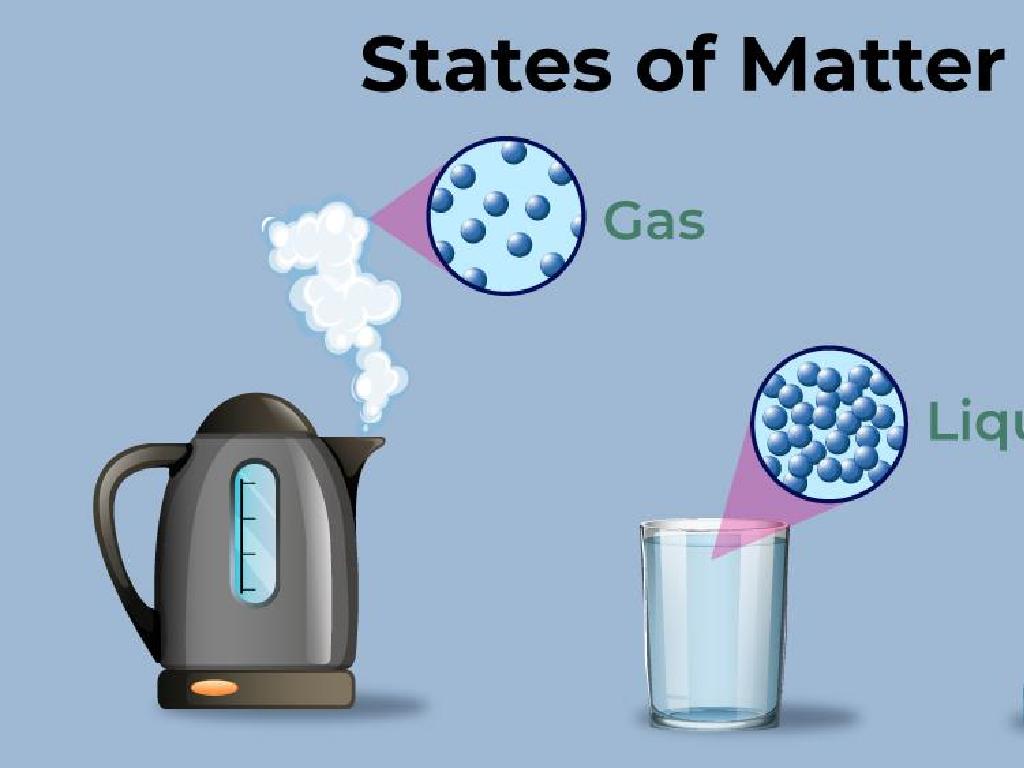Energy And Matter In Ecosystems
Subject: Science
Grade: High school
Topic: Biology
Please LOG IN to download the presentation. Access is available to registered users only.
View More Content
Introduction to Ecosystems: Energy and Matter
– Explore ecosystem interactions
– Ecosystems consist of living/non-living components interacting.
– Define energy and matter roles
– Energy flows and matter cycles within ecosystems.
– Overview of ecosystem dynamics
– How energy and matter move through food webs and biogeochemical cycles.
– Objectives of today’s lesson
|
This slide introduces the concept of ecosystems, focusing on the interactions between living organisms and their physical environment. It’s crucial to define how energy and matter operate within these systems, as they are fundamental to understanding ecological dynamics. Energy in ecosystems flows in a one-way stream, from primary producers to various levels of consumers, while matter recycles through biogeochemical cycles. Today’s lesson will delve into these concepts, exploring how energy and matter are transferred and transformed within ecosystems, and setting the stage for more detailed discussions on food webs, trophic levels, and nutrient cycles. Encourage students to think about local ecosystems and their components as a starting point for understanding these complex interactions.
Energy in Ecosystems: An Overview
– Defining energy in ecology
– Energy is the ability to do work and drives ecological processes
– Energy’s role in ecosystems
– Energy sustains life, cycles nutrients, and structures food webs
– Kinetic vs. Potential energy
– Kinetic energy is motion; potential energy is stored and ready for use
– Energy flow in food chains
– Producers to consumers, energy is transferred as organisms eat and are eaten
|
This slide introduces the concept of energy within the context of ecosystems. Begin by defining energy as a fundamental component that enables organisms and ecological processes to function. Discuss the two main types of energy: kinetic, which is energy in motion, and potential, which is stored energy. Explain how energy is crucial for sustaining life, cycling nutrients, and structuring food webs. Highlight the importance of energy transfer through food chains, starting with producers (like plants) that capture energy from the sun, and moving up to consumers (like animals) that obtain energy by consuming other organisms. Use examples like a simple food chain to illustrate these points. Encourage students to think about how energy efficiency and loss affect ecosystem dynamics.
Matter and Its Conservation in Ecosystems
– Matter: Mass and volume
– Matter cycles in ecosystems
– Nutrient cycles: water, carbon, and nitrogen cycles
– Conservation of Matter principle
– Matter is not created/destroyed, only changes form
– Matter’s role in life processes
– Organisms use matter for growth, energy, and reproduction
|
This slide introduces the concept of matter as it relates to biology and ecosystems. Matter is defined as anything that has mass and takes up space. In the context of ecosystems, matter is constantly cycling through different forms, such as in the water, carbon, and nitrogen cycles. The Conservation of Matter principle states that matter cannot be created or destroyed in an isolated system, which is a fundamental concept in understanding ecosystem dynamics. Matter is essential for various life processes, including growth, energy production, and reproduction. Students should be encouraged to think about how matter moves and changes within an ecosystem and the implications of these processes on the environment and living organisms.
Photosynthesis and Respiration in Ecosystems
– Photosynthesis: Light to Chemical Energy
– Plants convert sunlight into glucose and oxygen.
– Respiration: Energy Release from Glucose
– Organisms use oxygen to break down glucose, releasing energy.
– Oxygen and Carbon Dioxide Cycle
– Plants and animals exchange these gases, maintaining balance.
– Interdependence of Photosynthesis and Respiration
|
This slide explores the crucial processes of photosynthesis and respiration, which are fundamental to energy and matter flow in ecosystems. Photosynthesis is the process by which green plants and some other organisms use sunlight to synthesize foods with the aid of chlorophyll. During respiration, organisms break down glucose molecules to release energy, which is used for various cellular activities. The cycle of oxygen and carbon dioxide is a perfect example of the interdependence between plants and animals; plants produce oxygen during photosynthesis, which animals use for respiration, and animals produce carbon dioxide, which plants use to perform photosynthesis. Understanding these processes is key to grasping how energy flows and matter cycles through ecosystems, which is essential for the study of biology at the high school level.
Trophic Levels and Energy Flow in Ecosystems
– Producers: Ecosystems’ energy foundation
– Producers like plants convert sunlight into energy via photosynthesis.
– Consumers and Decomposers: Vital roles
– Consumers eat other organisms; decomposers break down dead matter.
– The 10% Rule: Energy transfer efficiency
– Only about 10% of energy is passed on to the next trophic level.
– Analyzing a Food Web: Case study
– Example: A forest food web shows complex interdependencies.
|
This slide introduces students to the concept of trophic levels and how energy flows through an ecosystem. Producers, such as plants and algae, form the base of the food web by converting solar energy into chemical energy. Consumers, including herbivores, carnivores, and omnivores, rely on this energy, while decomposers recycle nutrients back into the ecosystem. The 10% Rule illustrates that with each transfer of energy between trophic levels, only about 10% is passed on, with the rest lost as heat. To solidify understanding, present a case study of a food web, such as a forest ecosystem, to analyze the complex interactions and energy flow between organisms. Encourage students to consider the implications of this rule for the structure and function of ecosystems.
Matter Cycling in Ecosystems
– Explore the Water Cycle
– Understand how water supports life through its cycle
– Nutrient Cycles: Nitrogen & Carbon
– Learn how nitrogen and carbon are recycled in nature
– Human Impact on Ecosystems
– Examine how human activities alter natural cycles
– Conservation Efforts
|
This slide aims to educate students on the continuous movement of matter within ecosystems, emphasizing the water, nitrogen, and carbon cycles. The water cycle is a critical process that supports life by recycling water through evaporation, condensation, and precipitation. The nitrogen cycle involves the conversion of nitrogen into compounds that are usable by living organisms, while the carbon cycle manages the flow of carbon through the environment. Highlight the significant impact of human activities, such as pollution and deforestation, on these natural cycles and discuss the importance of conservation efforts to maintain ecosystem balance. Encourage students to think critically about their role in preserving these cycles and to consider careers in environmental science.
Ecosystem Dynamics: Energy, Matter, and Populations
– Energy & matter in population dynamics
– Energy flow & nutrient cycling influence population sizes and health.
– Ecosystem stability vs. disturbances
– Stability is the ability to resist change; disturbances can be natural or human-induced.
– Case study: Wolves in Yellowstone
– Reintroduction of wolves changed grazing patterns, affecting plant & animal populations.
|
This slide explores the intricate relationships between energy flow, matter cycling, and their combined effects on population dynamics within ecosystems. It’s crucial to understand how energy from the sun is transferred through food webs and how matter is recycled to sustain life. The concept of ecosystem stability is discussed, highlighting how ecosystems can resist or be altered by disturbances. The case study of the reintroduction of wolves in Yellowstone serves as a real-world example of how a single species can have a cascading effect on the entire ecosystem, altering vegetation, river patterns, and the behavior of other species. This case illustrates the complex interdependencies in ecosystems and the far-reaching impact of changes in population dynamics.
Class Activity: Ecosystem Simulation
– Divide into groups for simulation
– Create your ecosystem model
Use materials to represent components like plants, animals, and decomposers.
– Present energy and matter flow
Explain how energy and matter move in your model.
– Discuss ecosystem interconnections
Consider what happens if one species is removed or if a new one is introduced.
|
This activity is designed to help students understand the complex interactions within an ecosystem. By simulating an ecosystem, students will visually and practically explore how energy and matter flow through living and nonliving components. Each group should use the provided materials to create a model that represents producers, consumers, and decomposers. After constructing their models, groups will explain how energy is transferred from one organism to another and how matter cycles within their ecosystem. The discussion should focus on the balance of ecosystems and the potential impact of changes, such as species removal or introduction. Possible activities include creating food webs, simulating pollution effects, or demonstrating energy loss in trophic levels.






